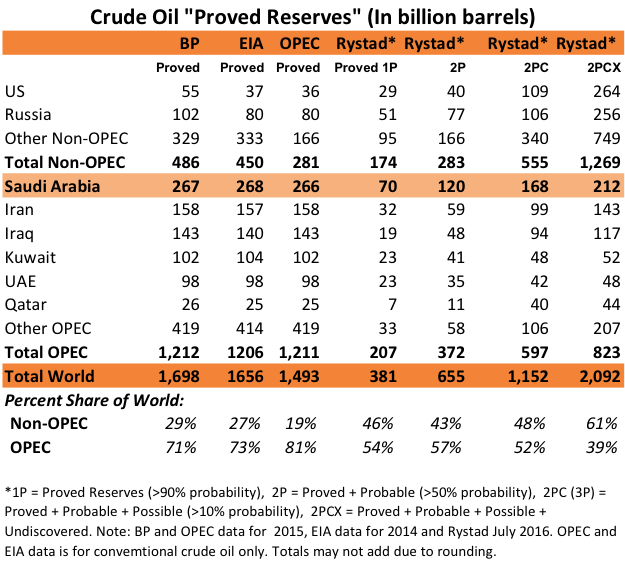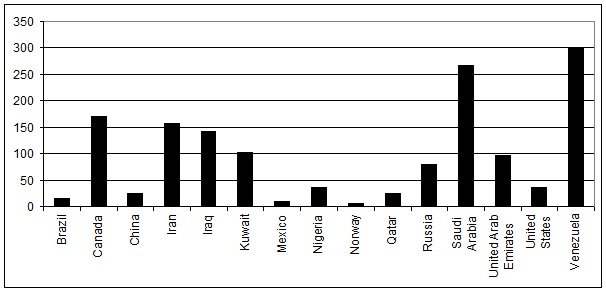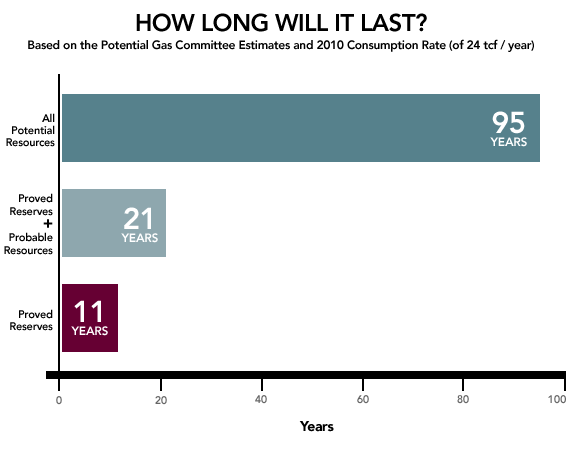
In July of 2017, United States Energy Secretary Rick Perry claimed we were "entering a new age of American energy dominance." President Trump reflected that view “We’ve got underneath us more oil than anybody, and nobody knew it until five years ago” (Oil Price). So far in 2017, the U.S. has imported more than 9 million barrels of crude oil per day, and net imports have averaged more than 7.3 million barrels per day. How exactly can the world’s biggest importer of oil become the "supplier" upon which other countries depend?
In the charts below, when looking at the proven amount of oil versus what is predicted (2PCX), North America clearly does not have the most oil.
What is also unsettling is that the amount of oil we know the world has (proven supply) is far less than predicted supply. And yet many sources use predicted supply as a rubric upon which to base the global economic future.

(Arab Gulf States Institute in Washington)
GLOBAL OIL PROVED RESERVES IN BILLIONS OF BARRELS ACCORDING TO BP DATA FOR 2016

| Oil reserves in World | 1706.670032 |
| Oil reserves in North America | 227.4753425 |
| Oil reserves in S. & Cent. America | 327.8584529 |
| Oil reserves in Europe & Eurasia | 161.5097505 |
| Oil reserves in Middle East | 813.46643 |
| Oil reserves in Africa | 127.9737887 |
| Oil reserves in Asia Pacific | 48.38626775 |
BP Statistical Review of World Energy 2017
BP Reserves in BB Interactive Chart
GLOBAL OIL PROVED RESERVES IN BILLIONS OF BARRELS ACCORDING TO U.S. ENERGY INFORMATION ADMINISTRATION

| Brazil | 16.1841 |
| Canada | 170.863 |
| China | 25.13212 |
| Iran | 157.53 |
| Iraq | 143.069 |
| Kuwait | 101.5 |
| Mexico | 9.711 |
| Nigeria | 37.07 |
| Norway | 5.138767 |
| Qatar | 25.244 |
| Russia | 80 |
| Saudi Arabia | 266.578 |
| United Arab Emirates | 97.8 |
| United States | 35.23 |
| Venezuela | 299.953 |
U.S. Energy Information Administration
PROVEN AND PREDICTED OIL SUPPLY ACCORDING TO RYSTAD
1P is what is real
2PCX is what is predicted
Rystad Energy provides services and products to E&P and oil field service companies, investors, investment banks, and governments. The Company offers consulting services and business intelligence data firm offering global databases, strategy consulting, and research products.
The new reserves data from Rystad Energy (the chart above) distinguishes between reserves in existing fields, in new projects and potential reserves in recent discoveries and even in yet undiscovered fields.
THE DELUSION OF "100 YEARS" OF NATURAL GAS
Some of the claims of a great American age of energy independence are based on predictions of the supply of natural gas. Yet there is only a guarantee we'll have enough natural gas for the next 11 years, not 100 years.

[Don't publish this chart]
(Source)
The reality is that the world energy supply may be much more limited than our leaders think. That is why it is so important to accelerate the switch from carbon and methane based fuels to renewable energy sources like wind and solar (of which there is actually an abundant and unlimited supply). There is also the matter of global and environmental safety to consider. Can the world handle 11 more years of a natural gas based economy in the United States? See our reports below.
OIL SUPPLY
Annual Energy Outlook 2017 (U.S. Energy Information Administration)
International Energy Agency Statistics
Statistical Review of World Energy (BP)
World Predicted Oil Supply Versus Reality (Rystad)
Permian Oil Reserves Are Grossly Exaggerated (Oil Price)
Venezuela's Oil Reserves Are Probably Vastly Overstated (Forbes, 7-1-16)
WikiLeaks cable: Saudi oil estimates may have been exaggerated (CNN, 2-9-11)
NATURAL GAS
The U.S. is Counting on A Long-Term Abundance of Oil and Natural Gas - But What if the Boom is Just a Bubble? (Shale Bubble)
WORLD FUTURE FUND REPORTS
The U.S. Shift to Natural Gas - A Threat to Life on the Planet?
Building a Sustainable Future: An Outline of Reform
The Need For a Manhattan Project on Renewable Energy